Its April of 2004, Two years before I had treated the family to a two week holiday in Florida to do the theme parks with our three lads, Lee Lewis & Kai, I had spent a lot of time away diving, weekends at Stoney or the pool in Fenton with trainees, weekday evenings at Denstone pool and occasional night dives on Wednesday evenings at Stoney too……Now these things needed to be done, my wages from JCB were only just covering the bills, if I wanted to keep diving (and that wasn’t really an “option”) then I had to make up the spend somehow, that meant training divers and Deep Blue Diving. It also meant additional pool and classroom hire costs and purchasing and maintaining dive kit, so it was a tight line I was walking, and, like cave diving, if that line gives……well, I had to keep that from happening! All that time taken from Ellie and the boys was only ever partially made up with them using the pools to swim and dive, and sneaking down under the water to “buddy Breathe” on the FSAC club members and Deep Blue Divemaster’s alternate regs, something they loved to do, because Ellie would be scared witless with how long they were underwater, before they would surface half way down the pool laughing their asses off……….. But so much time stolen from a young family takes its toll, the burden of that fell on Ellie, practically bringing the lads up on her own, I was a shit dad in that respect, and I felt it too, I wanted to give something back whenever I could. The 2002 Florida trip was all about the family, we did the parks, Disney and Universal, we did Gator-World, Sea-World, International Drive, Busch Gardens and the Everglades air-boats and the kids loved it, it was an amazing time and a wonderful place, so I was determined to go back again, to give something more if you like…… two years on and I’d squirreled enough away to take the family back and do the whole thing again, but this time I wanted something for myself……just a day I promised Ellie…..at Ginnie Springs!
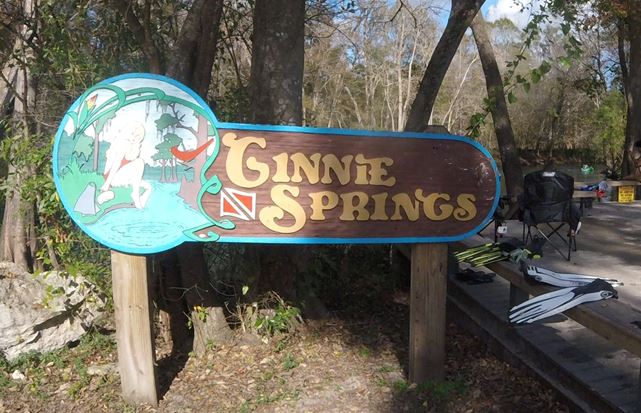
Now, ever since my un-planned cave dive in Istria in Croatia, (formerly Yugoslavia), during my 7 months tour with NATO there, I had a fascination with caves, and the idea of another look at the dark interiors of those sacred tunnels and caves underwater, where so few mortals go…….. I had read The Darkness Beckons and been fascinated by the descriptions of exploration and preparation for exotic caves with subterranean flooded passages and “sumps” blocking the path of those lesser mortals who would go no further, their passage blocked by the water before them…..and I’d seen the pictures of those breaking Wookey Hollow and Tulum, Wakulla and Ginnie Springs and pushing the boundaries of those systems ever further. One of those I trained at Deep Blue, Rob, who became one of my Divemasters, had started to do some diving with a cave legend, Martyn Farr, and he was diving the sumps of Welsh mines and would eventually go on to an expedition in Russia, featuring in one of Martyn’s articles in Diver Magazine, surrounded by Ice, in a God-forsaken cave under the Steppes, or was it the Urals, I’m not too sure, but it was extreme and ground-breaking……..Now that would not ever be me, I knew that, I am not interested in pushing envelopes and putting together teams to go to the ends of the Earth and see if anything is there, but I was intrigued, I wanted to see more of caverns and caves, to at least get a feel of what that diving was like, Ellie thought I was mad, I didn’t have an argument for that, but she agreed I could steal a day from the family holiday and take a trip to Ginnie to dive
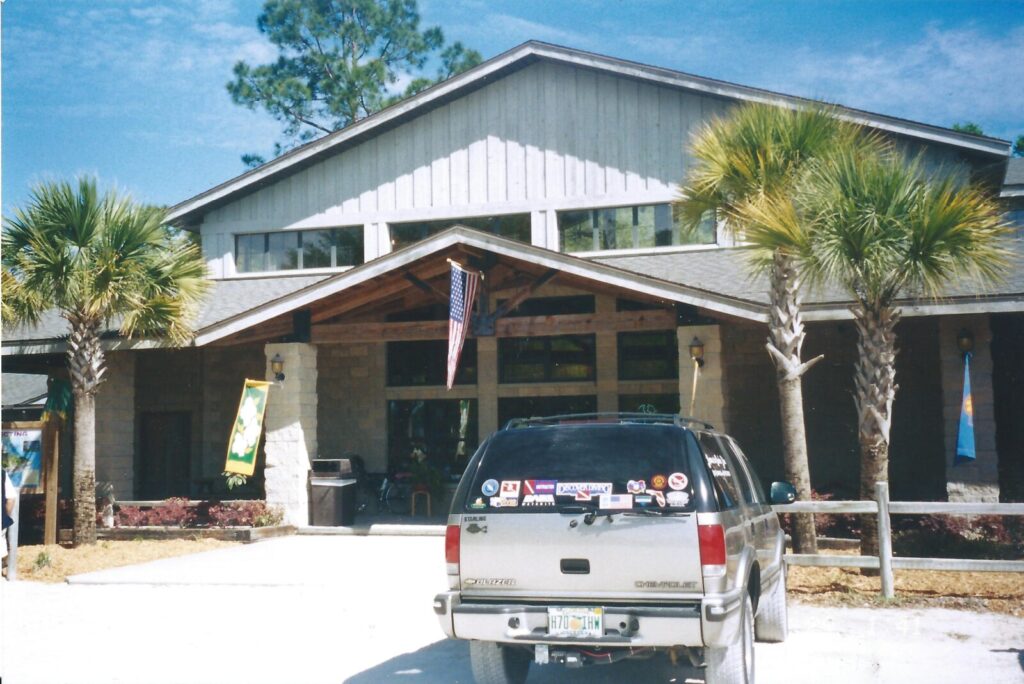
I had been hearing about Ginnie Springs for years, more so recently as I was diving more and more on Nitrox with IANTD, the CEO Tom Mount was a regular cave diver and Don Shirley, my Nitrox “shaman” often talked about Tom and Kevin Gurr, an acolyte of Tom’s, who ran IANTD UK & Europe. I knew the Florida Aquifer was big, that there were cave dive groups pushing to extend Wakulla springs system and I was hearing more about another new phenomenon (to me) called the “Re-breather”, something allowing these teams to carry out phenomenally long (4 hour) dives in these systems using re-cycled air from their breathing, in a kind of loop, from which Carbon Dioxide was removed and to which Oxygen was added to minimise the gas that was carried by the diver, but extend the dive time to extraordinary lengths….but more on that in another post to come. So the main name I had been hearing was Ginnie springs, quite a distance from the Theme Parks, a good 3 or 4 hour drive, but a place set-up for visiting divers, unlike Wakulla, accessible to people like myself, untrained, tourist divers with a “need to Know” but no commitment to taking a specific route on a cave diving course yet
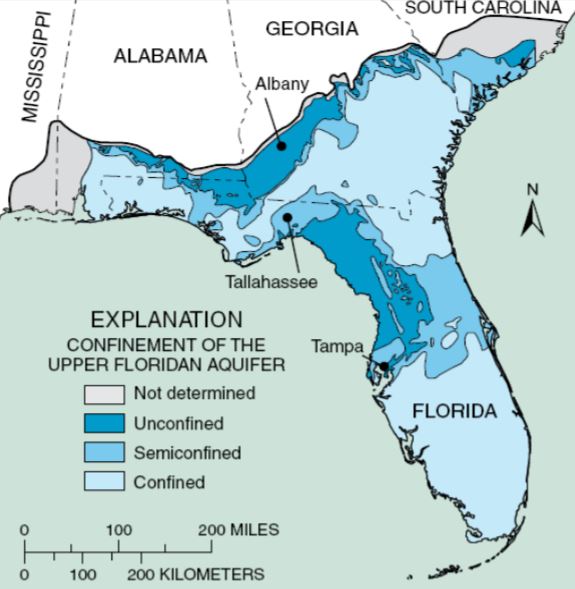
By way of an introduction to Ginnie Springs, Ginnie is a privately owned park located in Gilchrist County, central North Florida, about 6.5 miles from High Springs, USA. Ginnie sits alongside, and encompasses part of the Santa Fe River, to which it is connected. The water is clear and cold and the caverns are, as is usual in Aquifers, carved out of a limestone rock landscape by water erosion resulting in clean sandy bottoms. Ginnie Springs has been privately owned by the Wray family since 1971 and opened in 1976, however it took until the 1990’s, when scuba diving in the USA became more accessible and grew hugely in popularity, (some would say as a result of PADI and the ascendancy of such a widespread common training methodology) to result in the Wray’s opening the springs to the public. Although in the litigation prolific culture of the US and, sadly, due to an increasing number of scuba diver deaths in cave systems, the Wray’s installed an iron grate at the entrance to the main cave system and placed warning signs for divers, the grim nature of them now spread wide in the outside world, and common in most of the USA and the Mexican aquifer of the Yucatan
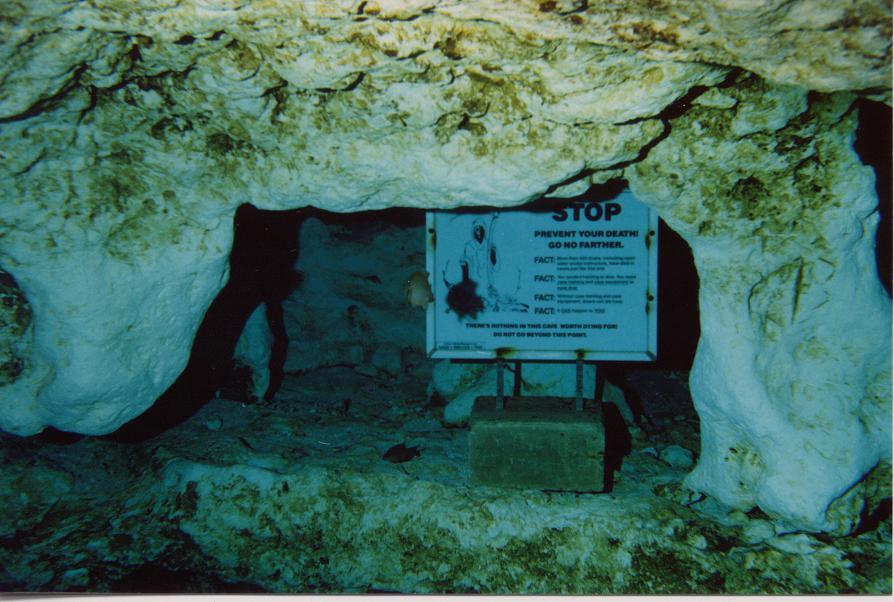
Ginnie Springs is far more than just a diving experience, visitors can swim, snorkel, canoe or Kayak, and “tube” (Think Tractor Tyre innertubes) along the Santa Fe River, nowadays they can also stand up paddleboard and there are various springs visitors can enter and swim in. Ginnie is a source for local bottled spring water, the water of the spring is crystal-clear, and the underlying Limestone geology assures around 100,000 miles of subterranean coverage, providing the drinking water for the whole state and its population. Tragically Nestle was recently granted permission to take over 1.1 million gallons a day from the aquifer that feeds Ginnie, and other nearby springs, sparking a national and perhaps even somewhat global outcry, quite rightly in my personal opinion. The natural balance of this system is delicate and should not be taken lightly, those who dive the caves of Florida keep a keen eye on conditions, they are the state’s first litmus test of the heath of the underground water Florida relies upon
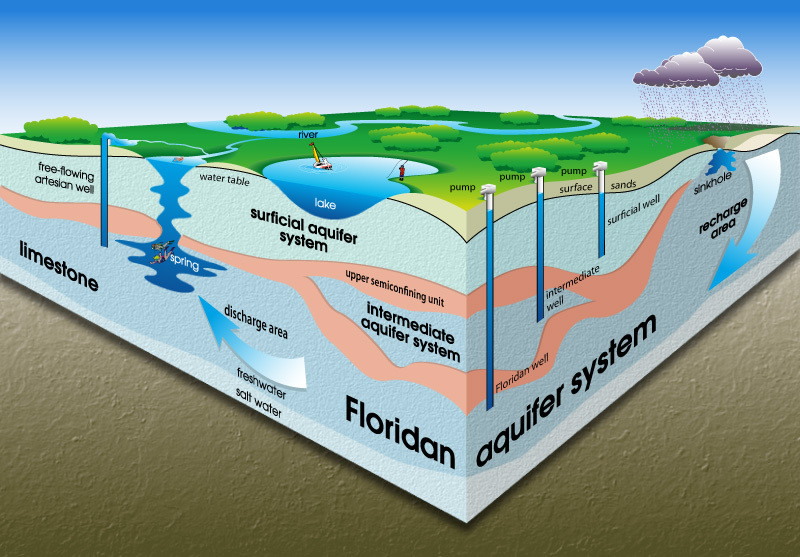
THE BALLROOM
When you first set eyes on Ginnie Springs, having signed the waivers and conditions paperwork in the shop, you see the spring is a large, bowl-shaped pool measuring around 30m across and 5m deep. For those kayaking or “Tubing” there is a long run connecting the basin to the Santa Fe River. Ginnie’s main attraction, for those diving her, is the cavern, whose wide, open entrance is found at the bottom of the basin, across from the entry steps. When I visited it was close to mid-day and there were swimmers, snorkelers and even a few on Tubes, already enjoying the powder Blue water and I couldn’t wait to get in, it was a hot day and I was out of the air-conditioned cab of our dive guide Kent’s big Yank Chevrolet truck that had carried our diving kit up from the dive-shop back at Kissimmee
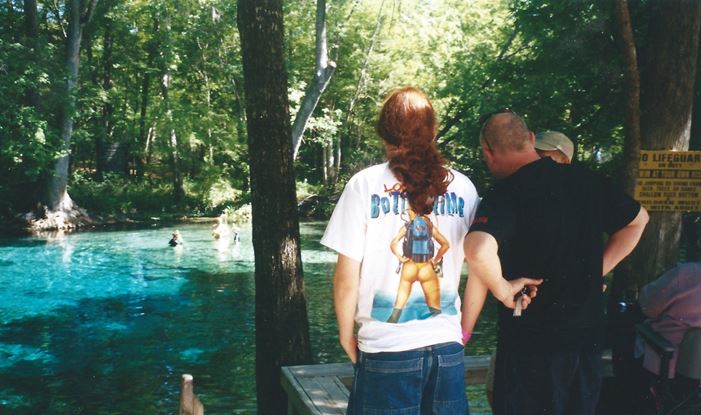
Ginnie’s cavern is among the handful of Florida sites that are considered sufficiently safe to allow divers who lack formal cavern or cave diver training to explore. The steel bars fitted across the entrance to the main cave system are there for a reason, as is the warning sign, divers die in caves, it’s not compulsory, but there is way more than “Sod’s Law” to diving deaths in caves and caverns. The inquisitive nature of the human condition makes most curious as to what lies beneath, add to that long and twisting passages, flooded throughout most of their length, throw in sometimes deceptively fast currents, expect the odd equipment failure, and then consider the light which only penetrates for the first few meters of any cave system and you have most of the reasons divers die in caves……..Of course there is stupidity, venturing beyond your training, light failures, making it almost impossible to regain the cave lines running where others have gone before, should you take your hands off for even an instant….there is carelessness where swimming with the current in a system leads you to over extend your air or gas supply, which you will inevitably use more of, swimming against the current back towards the cave entrance……..and then there is the opportunity to lose yourself, some of these cave systems go for miles, and there are many parallel tunnels, branching off, easy to end up in the wrong one, easy to feel lost and a surge of panic well up increasing the breathing rate and, therefore, the gas consumption. It isn’t surprising that the owners at Ginnie fitted the steel bars at the very back of the Ballroom, where those tempted beyond their training might do themselves harm……It is nice to see though, that divers of all experience levels are allowed to take lights into Ginnie Spring’s Ballroom to explore the cavern. The upper room of the cavern, in the light penetrating area is illuminated by natural light from the entrance. Looking back from this room toward the entrance provides a beautiful view, the cavern’s upper room walls are composed of highly reflective limestone, adding to the natural beauty and throwing reflections off the air-bubbles constantly streaming up towards the cavern roof
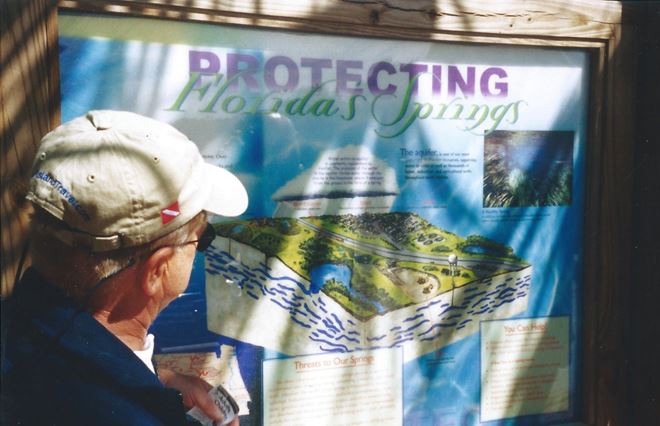
Our dive guide Kent had driven me up to Ginnie in his big Chevrolet truck, along with the kit for the four of us to dive that day, there were two others joining us at the site itself. I had a great journey up discussing diving, the American way of life, Limey’s and all manner of topics, it was an enjoyable trip. Kent had worked as an independent instructor with the Kissimmee dive-shop for some years now and, as a cave diver, was a natural selection to take a few tourists out for a day in the caverns. Once we had signed a dozen waiver’s and insurance disclaimers, and had the dive brief from Kent, we kitted up under the purpose built sun shades, using the kit tables kindly provided for the purpose by the Ginnie Springs owners…….it was time to dive! My log book records: “Ginny – Springs Florida USA – A glimpse of the realms of cave diving. The training grounds of the greats – (Sheck) Exley – Palmer – Farr. The cave system starts here but is now grilled shut about 40m back in the cavern where water surges up at 1kt. The cavern is a delight with a squeeze & several off-shoot grotto like areas. Trapped air on the roof reflects like a mirror ball when lit from below – a superb dive with ghosts of greats as buddys – just out of sight!! Air In 250 – Out 150 Buddy Kent”
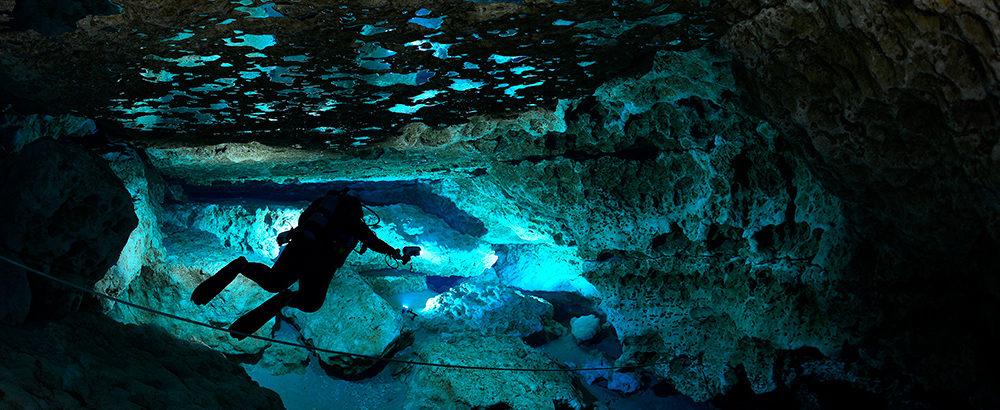
There is a good descriptive of what can be seen in the cavern on Ginnie’s own web-site, it says: “Moving to the back of the upper room, divers pass through a large opening into the amphitheater-sized area called the “Ballroom.” Although surface light is clearly visible from most places within the Ballroom, divers will want to carry dive lights to see everything there is to see. The Ballroom provides divers with the opportunity to examine many of the unusual geologic formations that are unique to the Floridan Aquifer. The Ballroom’s ceiling contains an excellent example of spongework–a gigantic, limestone Swiss cheese. Midway between floor and ceiling, divers will find evidence of a bedding plane–a distinctive horizontal crack that is crucial to the movement of underground water. At the northwest corner of the Ballroom is a beautifully carved phreatic tube–a perfect example of the most common form of underwater cave formation. Nearby, a larger bedding-plane formation collects air in mercury-like pockets on the ceiling” I couldn’t have put that better myself, hence the quote, the Ginnie web-site is not half bad and whoever wrote it was succinctly descriptive
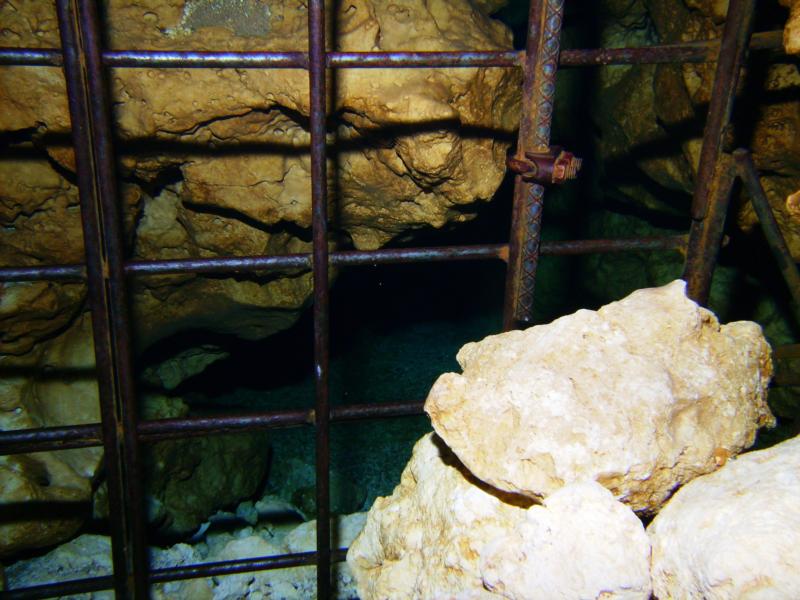
The Ginnie web-site description goes on to say “At the very back of the Ballroom (a maximum depth of 17m), is a large, welded grate. This grate prevents divers from entering the dangerous, silty and maze-like cave system that lies beyond. Nevertheless, most divers enjoy pulling themselves up to the grate, so that they can experience the “in-your-face” force of the 35 million gallons of water a day that pass through the opening. A large-diameter, heavy duty guideline runs from the back of the Ballroom to the cavern entrance. This helps ensure there is never any doubt as to which way is out” I suspect the description of “…dangerous, silty and maze like cave system….” is a somewhat overly emotive way of reminding those diving the cavern of its potential dangers
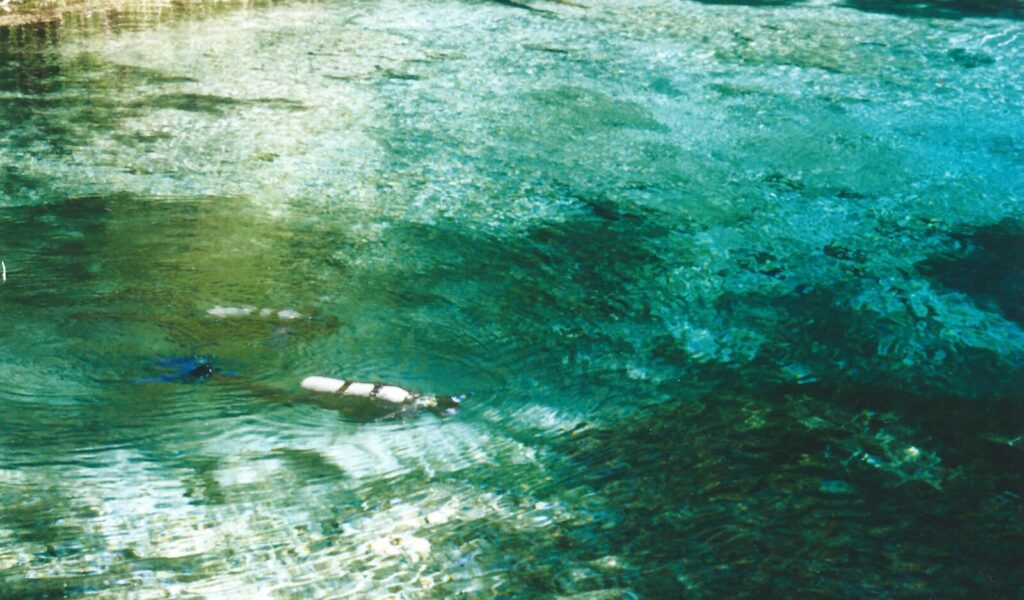
We had spent almost an hour in the cavern and had a wonderful dive, I had seen all I could having done several circuits around the cavern, and behind the boulders and into the smaller spaces of the various areas of the cavern in its lit, and its darker areas at the back. It was time to get something to eat and drink before we took on the “Devil’s Ear”, which Kent had told us would be our second dive of the day at the dive-brief. After a brief dry-off and something to eat and drink Kent described the next dive at the Devil’s Ear, part of the Devil’s Spring System and home to three separate springs, the aptly named Devil’s Eye, Devil’s Ear and Devil Spring or “Little Devil”, which produce nearly 80 million gallons of water between them daily. Kent explained that, despite our use of dive torches in the cavern, Ginnie Springs enforces a strict no lights rule at the Devil’s Ear, allowing only certified cavern or cave divers to enter the water in any of the Devil’s Spring system while carrying dive lights, which helps prevent non cave trained divers from entering an area where lack of training, or experience could get them in trouble
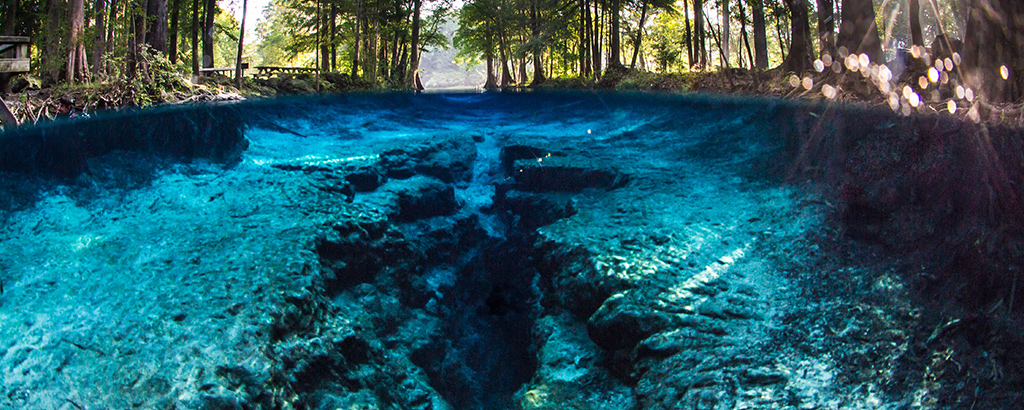
The Devil’s Spring, or “Little” Devil, is a meter plus fracture at the head of the Devil’s Spring System run. Around 17m long it is almost as deep, Ginnie’s web-site puts it beautifully saying “Divers who descend to the bottom of this crack will be rewarded with a breath-taking view as they look skyward, even from the very bottom, it is not unusual to look up through the clear water and be able to count the leaves on the trees overhead. Devil’s Eye is a round opening, 20 feet across and equally deep. At the bottom is the entrance to a small, intricately decorated cavern. Certified divers may enter the cavern and explore up to the limit of what they can see, using available sunlight” and I wouldn’t disagree with one word! Kent took us a little further into the fields and trees surrounding the dive shop and lodge and on to another kitting up area, smaller than that of the Cavern
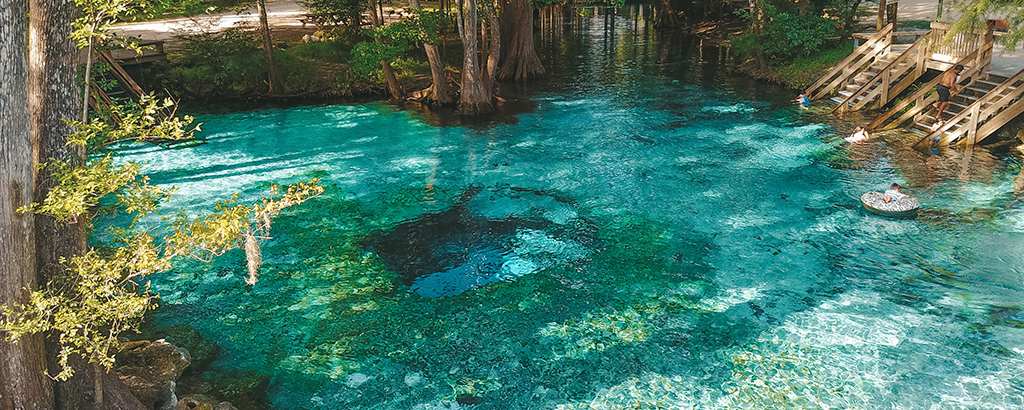
The dive took place in the late afternoon and there were, again, beautifully constructed wooden stairs into the water making entry easy, my dive log describes our second dive at Ginnie springs: “Ginny Springs – Florida – USA The Devil’s ear – named as the pool in the Santa Fe river (tributary) where you enter is (ear shaped) then a sharp descent in a very narrow crack with currents at 1-1.5Kt which are impossible to fin against but fun to try. The famous “Reaper” warning is here. After that we swam the Santa Fe & back up into Ginny a magic dive. Air In 230 Out 150 Buddy Kent”. Now Kent had warned us we could encounter ‘Gators in the river swim following our 15 minutes or so in the opening to the Devil’s Ear in the dive briefing. I could see it may be an issue as the water in the river swim took on a beautiful bright Green hue, something to do with the vegetation in the swampy areas around Ginnie, the levels of Tannin, the colouring in some Scotch Whisky’s, and the entirely different flow characteristics I suppose
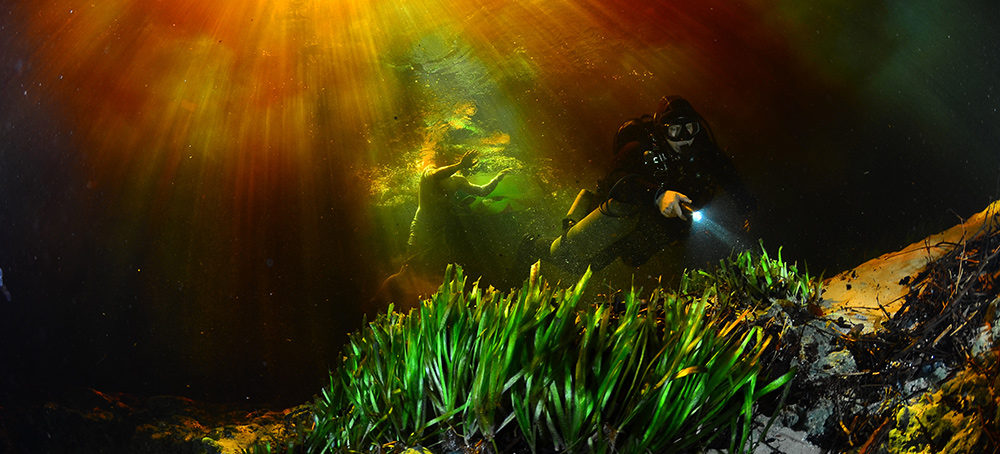
Ginnie springs describe the Devil’s ear as “…..a canyon-like opening located where the Devil Spring run joins the Santa Fe River. At the bottom of this opening, water gushes from a cave opening with nearly fire-hydrant-like force. Although the water in the Devil’s Ear basin is generally crystal clear, it is common for it to be covered with a thin layer of tannin-stained river water. This phenomenon enables divers to sit in the basin’s clear water and look up at the sun and trees through a unique, stained-glass effect created by the river water”

We spent almost an hour between the dive in the ear and the swim up the river back into the cavern sump, it was a wonderful day and I had loved every minute of it. Whilst my first ever cave dive had been unplanned, and at the mercy of those I was diving with, and required a level of trust in them to return me to the surface safely afterwards…the two dives at Ginnie Springs had been completely different, planned and briefed well and something I was the instigator of, I loved both dives and, if I could, I would have asked Kent to take me further into the system to see a little more, would he have done so…… I doubt it, but I had enjoyed the day so much I’d have definitely asked!
